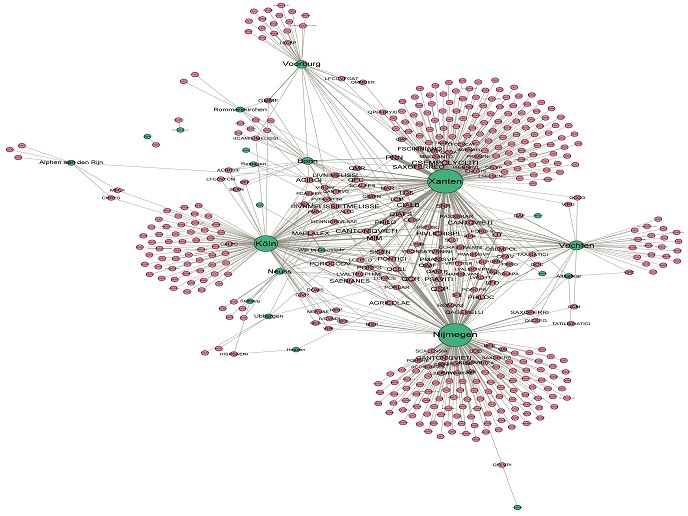Politics and dynamics of the Roman trade system: What do we really know?
Ancient history is based on abductive reasoning and its evolution is dependent on the capacity to argue, test and falsify previous hypotheses. Over the years, several scholars have developed a variety of hypotheses to explain the organisation of the Roman Empire trade system. The study of food management represents one of the main debates among specialists in this field. These hypotheses, however, are speculative and difficult to falsify due to the lack of formal models that would enable the analysis of available data.
Overcoming this boundary
“The main goal of the EPNET project was to use formal tools to falsify existing hypotheses concerning the Roman economy to understand which products, in which periods, were distributed through the different geographical regions,” explains José Remesal, coordinator of the project EPNET. He adds: “We also wanted to ascertain the role different political and economic agents played in controlling the products and the trade networks.” To find answers to these scientific questions, a strong interdisciplinary research team worked towards setting up an innovative framework to investigate the political and economic mechanisms that characterised the dynamics of the commercial trade system during the Roman Empire.
A spotlight on EPNET’s work
EPNET focused on the exploration of epigraphies and amphoras from the CEIPAC dataset, one of the most precise archaeological and historical semantic markers available from the Roman Empire trading system. This provided EPNET with the opportunity to participate in the www.eagle-network.eu (Eagle Network). “In particular, research activity was dedicated to the development of the domain ontology, the release of the semantic database of CEIPAC and its successive integration with a series of existing datasets using an ontology-based data access and integration approach,” reports Remesal. Using this approach, a www.romanopendata.eu (semantic portal) was also created. “This part was particularly innovative because it coupled the semantic approach with data visualisation technologies, for supporting data-driven explorations and pattern detections,” adds Remesal. Additionally, the project, in their study of the Roman Empire, chose some of the poles/paradigmatic points to achieve an overview. Remesal confirms this to be: “Colonia Ulpia Traiana: Xanten (Germany), Mutina, Pompeii and in Rome, the capital of the Roman Empire, in Monte Testaccio.” Remesal further notes: “We have also published some books and articles as well as developed interdisciplinary environments.”
Looking to the future
“We have identified new challenges to our research. One immediate result of this has been our incorporation into the ARIADNEplus project, which aims, through the application of an ontological system, to interconnect numerous databases related to the history and archaeology of the classical world,” notes Remesal. Furthermore, the analysis of amphora epigraphy, the starting point of EPNET’s studies, has created a need for the project to approach these documents from new perspectives. EPNET, using the innovative methods of analysis developed within the project, also aims to develop a study which analyses professional corporations linked to food trade and the new perspectives.
Keywords
EPNET, hypotheses, Roman Empire trade system, CEIPAC dataset, semantic portal







